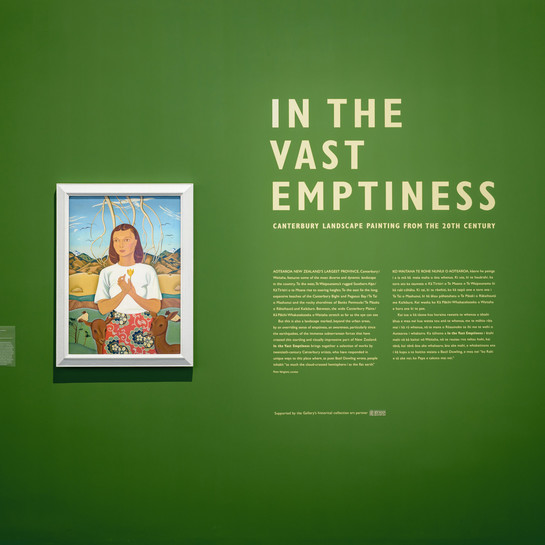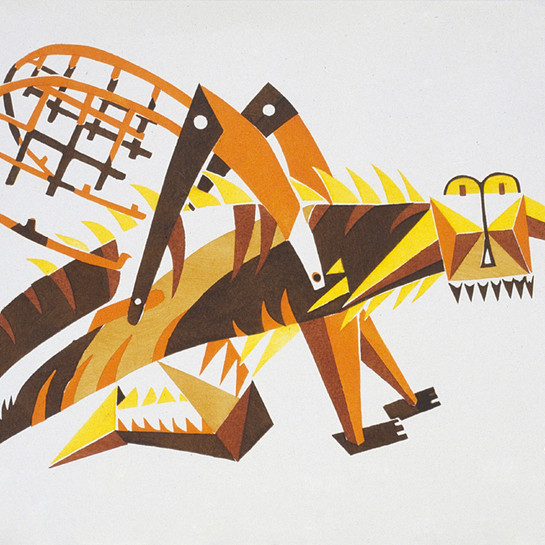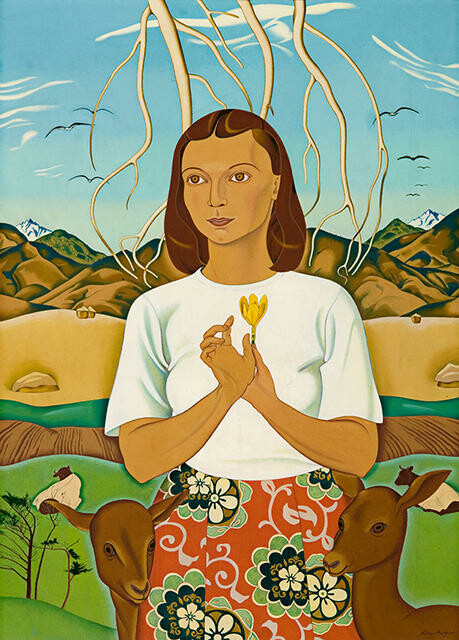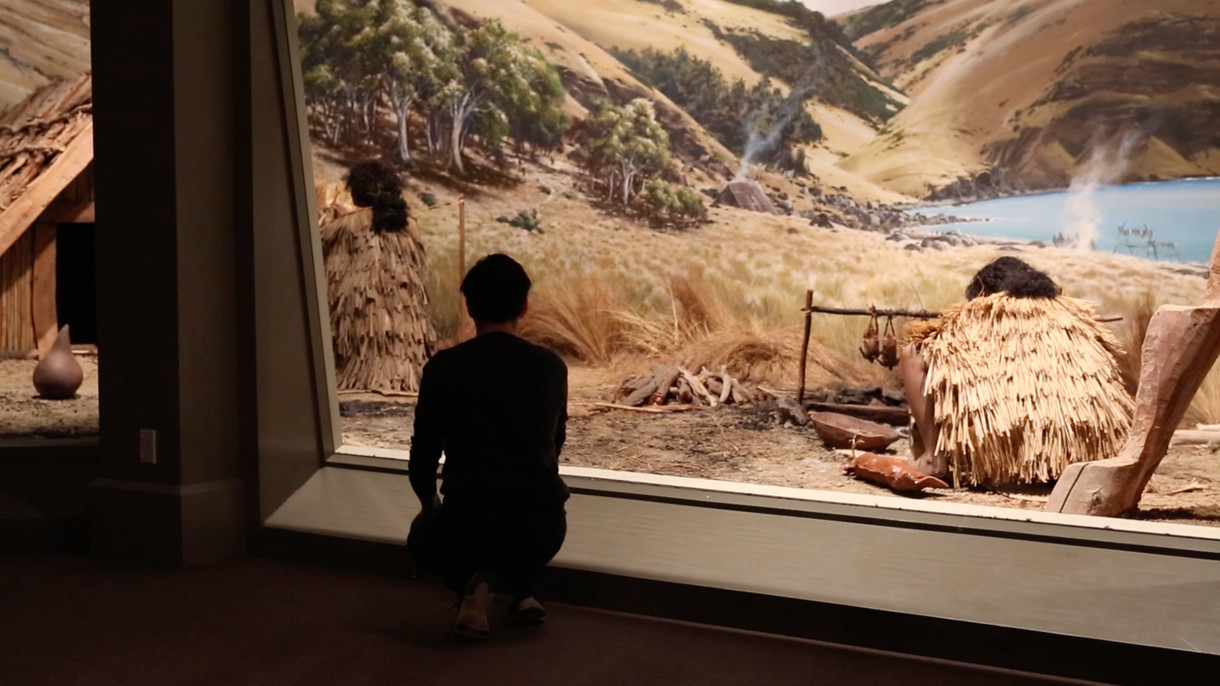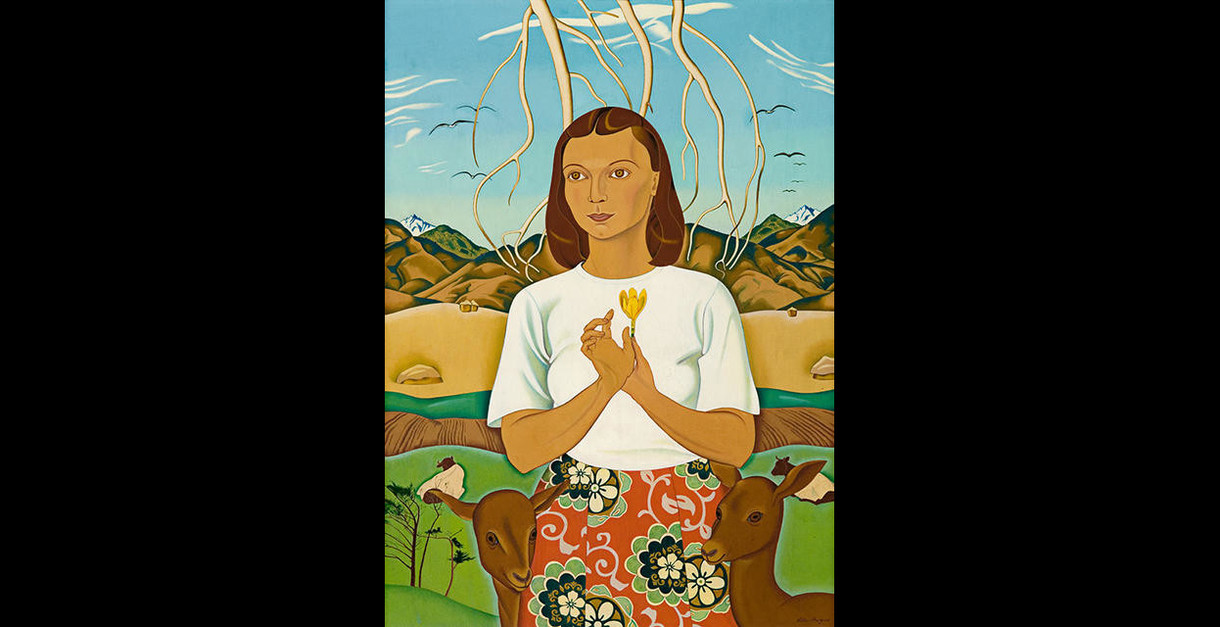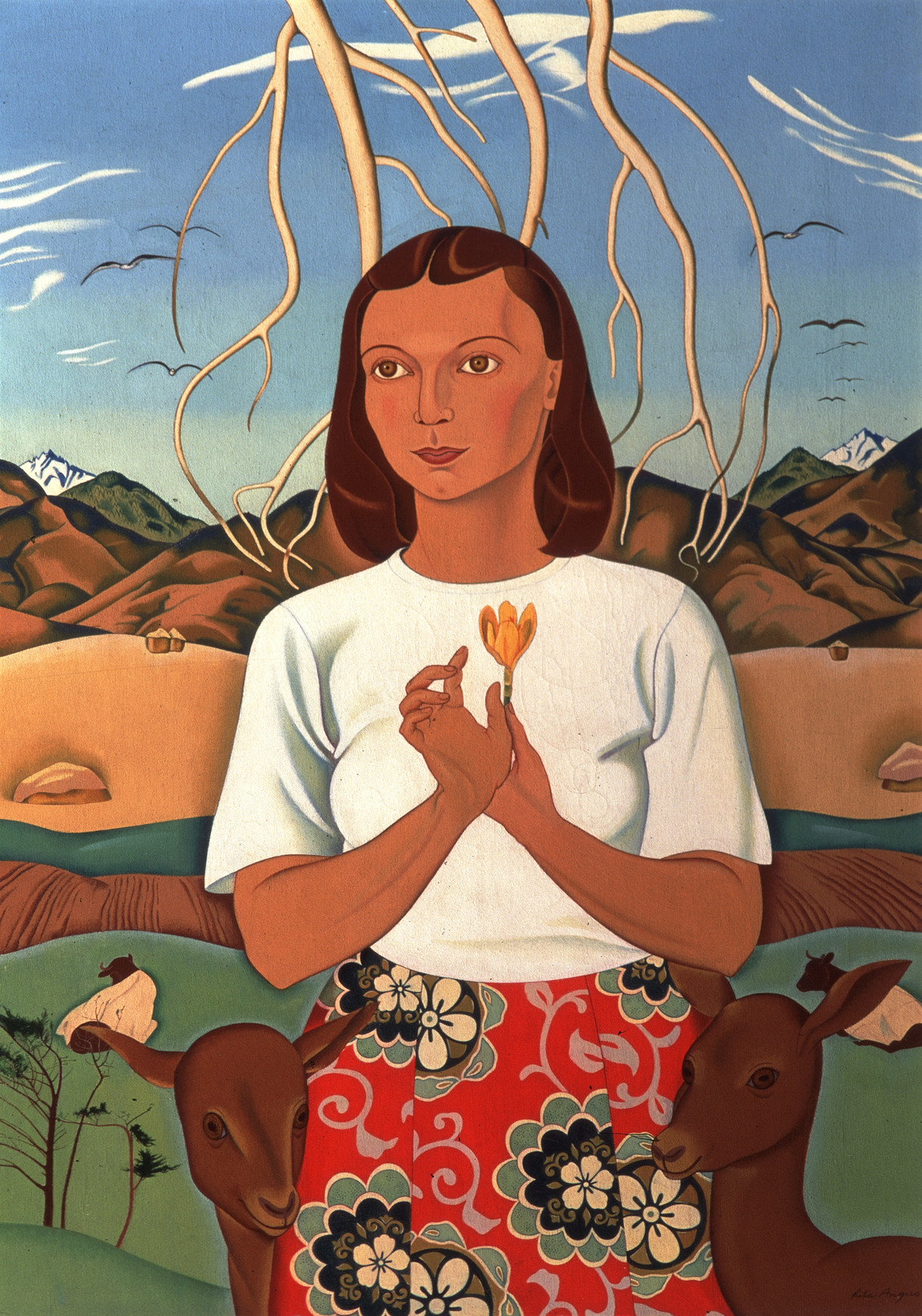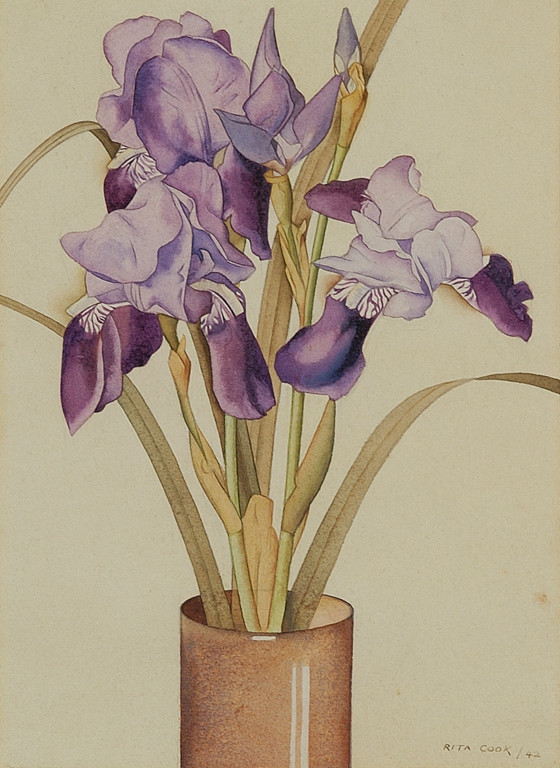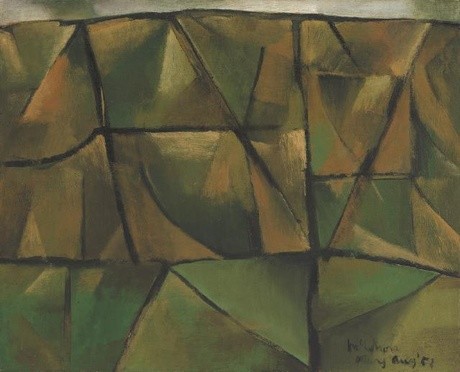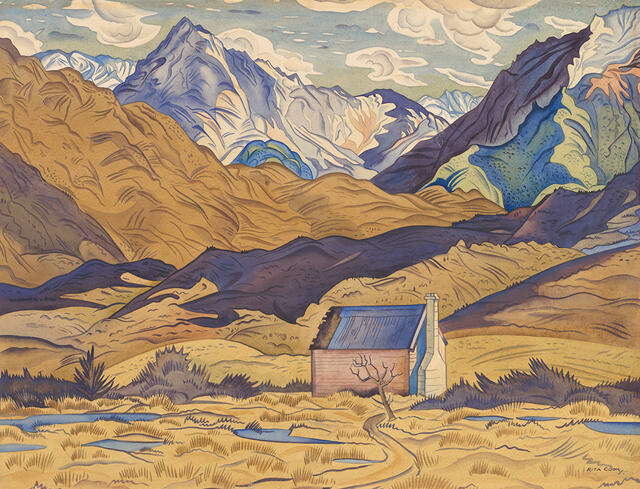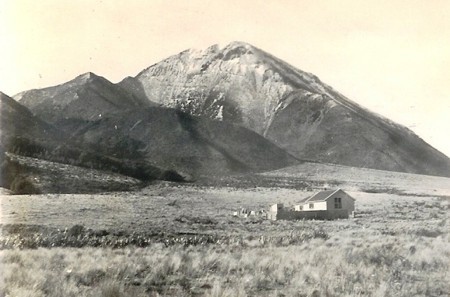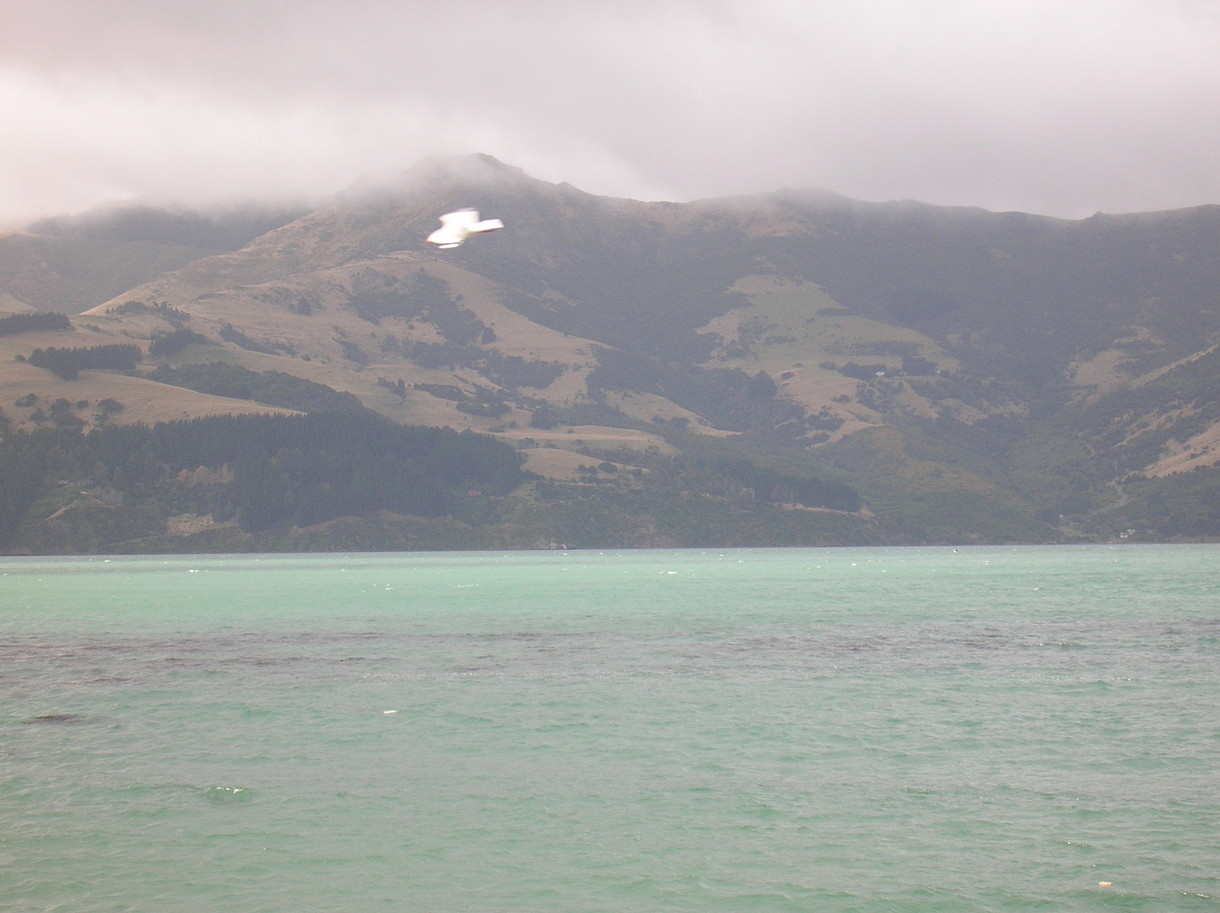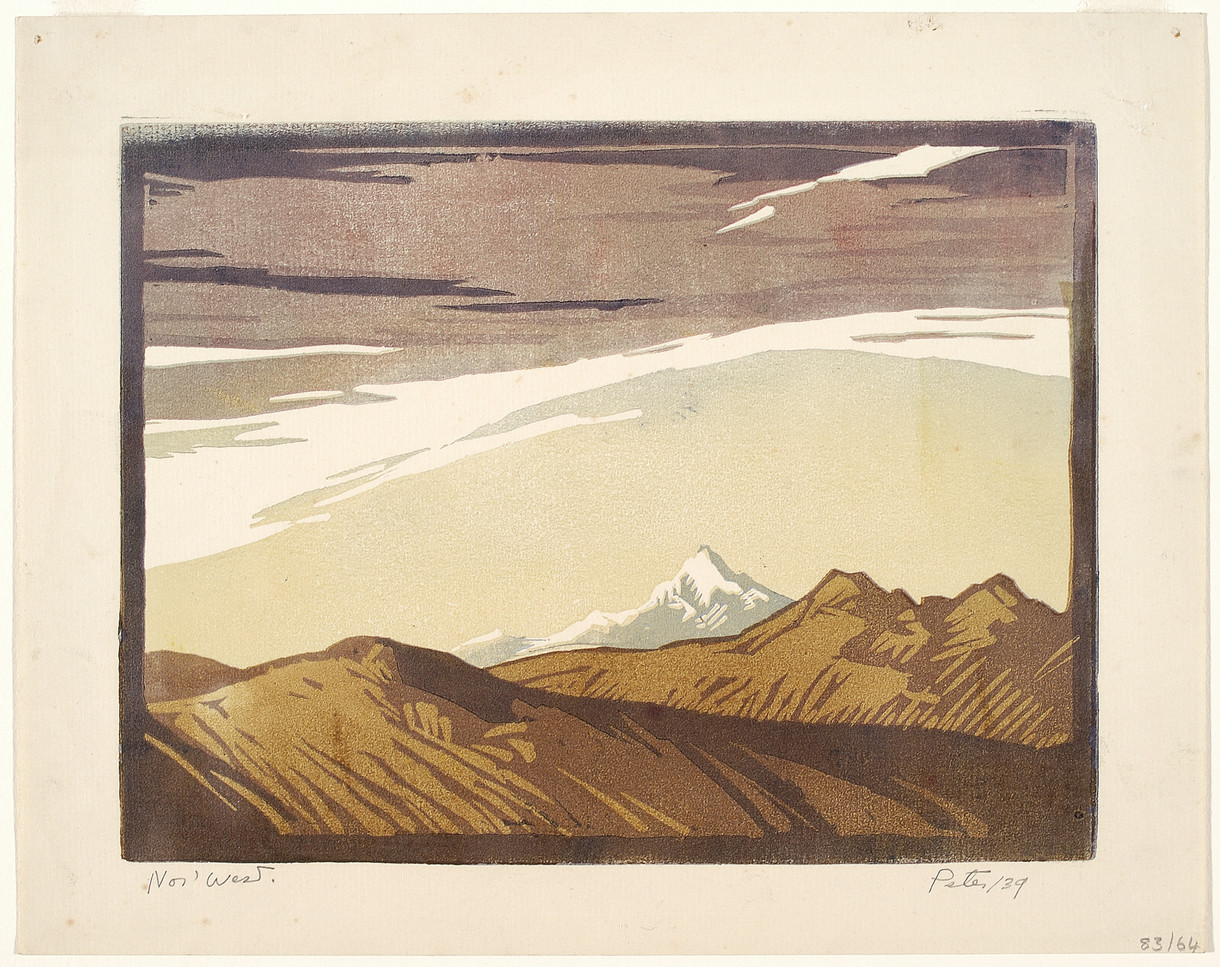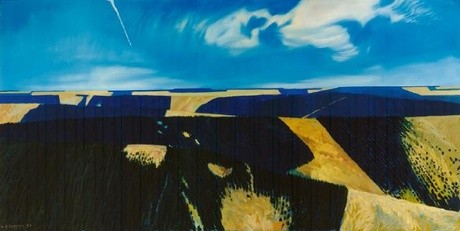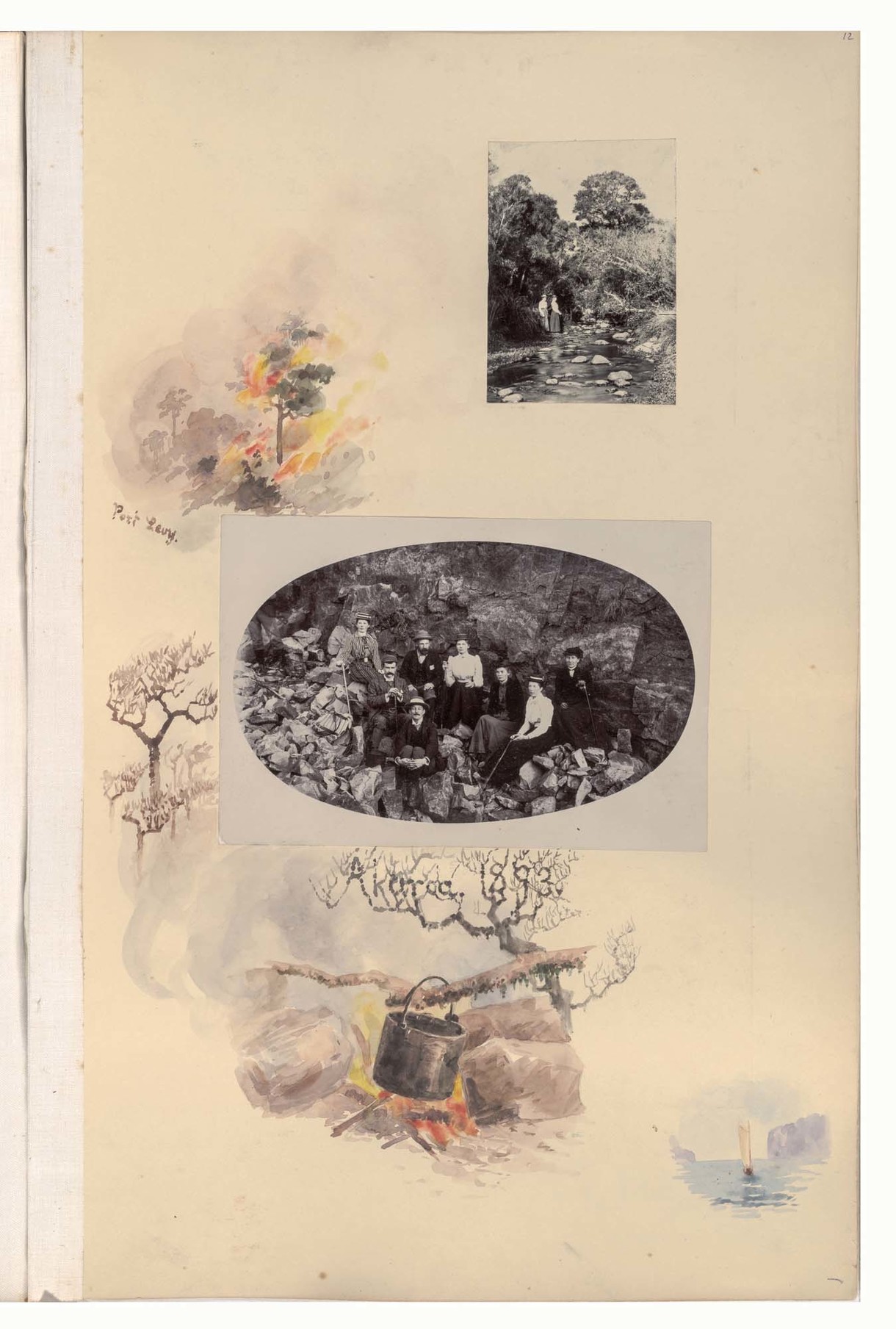Rita Angus
Aotearoa New Zealand, b.1908, d.1970
A Goddess of Mercy
- 1945-1947
- Oil on canvas
- Purchased 1956
- 866 x 611mm
- 69/75
Tags: animals, birds (animals), Buddhism, deer, farms, floral patterns, flowers (plants), goddesses, mountains, people (agents), portraits, siblings, snow (precipitation), spring (season), Surrealist, trees, women (female humans)
Ōtautahi-trained painter Rita Angus is known for her distinctive graphic style, clear light and bold colours. A Goddess of Mercy is the first of three goddess works she painted. Informed by her feminist worldview, Rita saw the goddess portraits as the most important examples of her pacifist ideas. This work also has personal significance. Rita’s sister Edna died suddenly in 1940, and the pattern on the subject’s skirt comes from one of Edna’s favourite outfits. Surrounding the figure we see symbolic clues to a relationship with nature: a deer at the figure’s side, willow branches forming a halo around her head and the crocus flower clasped in her hand, a hopeful sign for the coming of spring.
(Perilous: Unheard Stories from the Collection, 6 August 2022- )
Exhibition History
In the vast emptiness, 8 January - 21 August 2016
The Canterbury landscape was violently shaken by the sequence of earthquakes that began in the dead of night on 4 September 2010. Parts of the vast Canterbury Plains, including the reclaimed swampland that Christchurch was built on, were literally ripped apart, while many of the volcanic outcrops and cliff faces on Banks Peninsula shattered and fell. Memories of those scenes provide a stark contrast to the serene, idealised Canterbury landscape watched over here by Rita Angus's A Goddess of Mercy, with its green and golden pastures, ploughed fields and foothills extending to the mountains beyond. Radiating peace, order and oneness with the landscape, it offers a reassuring vision after the uncertainty, stress and loss of living through the earthquakes.
Brought to light, November 2009- 22 February 2011
Rita Angus painted A goddess of mercy in part as a tribute to her sister Edna, incorporating the pattern from one of Edna’s favourite housecoats into the floral print of the goddess’s skirt. Completed after the end of the Second World War, it expresses the artist’s vision of a more peaceful future and her belief in the vital role women could play in averting war. Updating the western tradition of Madonna paintings, Angus’s contemporary goddess watches over a beautiful, hopeful world, while the melting snow, ploughed fields and yellow crocus herald the arrival of spring and the possibility of new beginnings.
Art Detectives, 20 October 2006 - 25 March 2007
Rita Angus made this painting after the Second World War, in memory of her sister Edna who died in 1939. Here, the artist expresses her hopeful vision of a more peaceful world with melting snows, ploughed fields and a yellow crocus symbolising new beginnings with the arrival of spring.
Portraits and Personalities, 14 May 2004 - 1 May 2005
This painting is a memorial to Rita Angus’ sister, Edna, who died in 1939. The painting is one of three goddess works that portray symbolic, idealised women, rather than specific individuals. The crocus the goddess holds is a symbol of late winter and the stripped willow around her head is like a halo. Angus was interested in Eastern art and thought and here she presents an image of the Chinese goddess Kwan Yin, who embodies the same virtues as the Virgin Mary. Colour, line, tone and form were her primary concerns as a painter. Angus was born in Hastings. She studied at the Canterbury College School of Art from 1927 to 1933, then worked as an illustrator for the Christchurch Press Junior. By 1955 she had settled in Wellington and in 1958 was awarded an Association of New Zealand Art Societies Fellowship, which allowed her to travel to England and Europe. There she studied old masters as well as contemporary art. Throughout her life Angus completed many revealing self-portraits.

